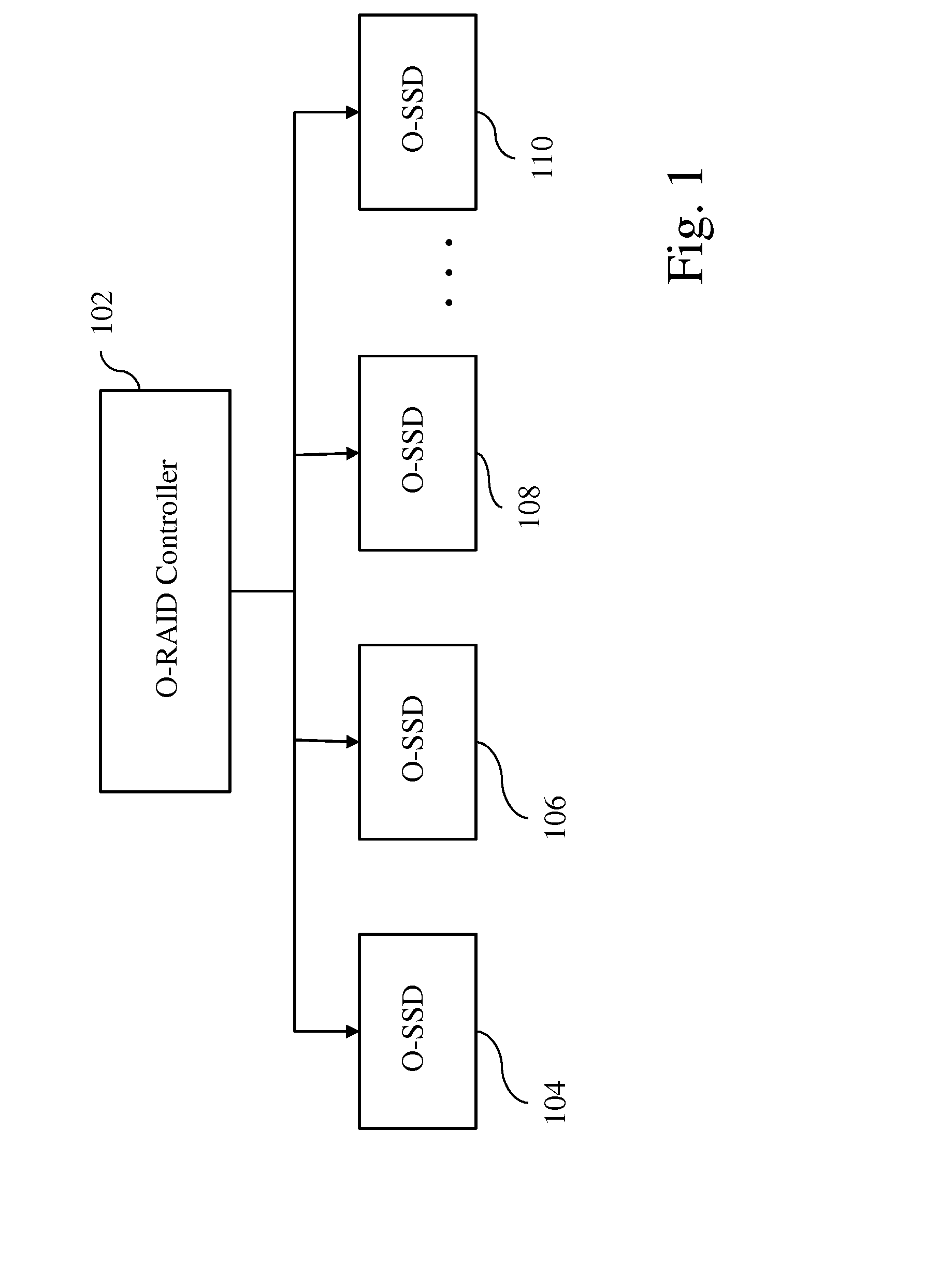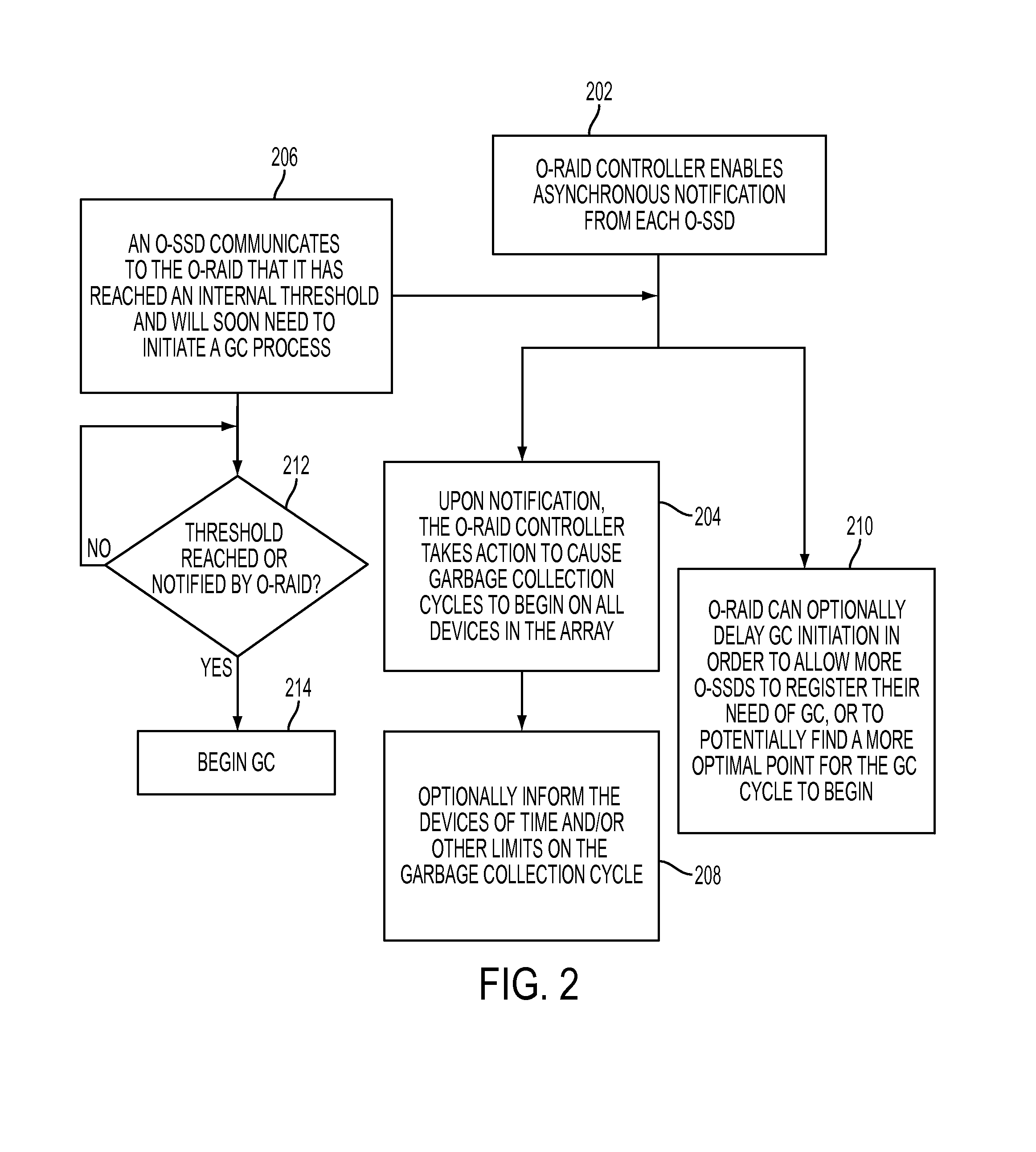Coordinated garbage collection for raid array of solid state disks
a solid state disk and garbage collection technology, applied in the direction of memory address/allocation/relocation, error detection/correction, instruments, etc., can solve the problems of fundamental performance bottleneck, mass production cost drop, and loss of all data on the array
- Summary
- Abstract
- Description
- Claims
- Application Information
AI Technical Summary
Benefits of technology
Problems solved by technology
Method used
Image
Examples
Embodiment Construction
[0020]A global garbage collection (GGC) mechanism is disclosed for solid state devices SSD architected in a RAID array. The GGC mechanism of the present disclosure in one embodiment may implement and utilize an SSD-aware RAID controller and GGC-capable SSD devices, as well as algorithms to coordinate the GGC cycles. A globally coordinated garbage collection (i.e., GGC) mechanism of the present disclosure may improve response times and reduce performance variability for a RAID array of SSDs, e.g., reduce the effect of an aggregate performance degradation present in a RAID array of SSDs.
[0021]The following terms are used in the present disclosure to describe one or more embodiments, but are not intended to limit the scope of the invention.
[0022]RAID: RAID is an acronym for redundant array of inexpensive disks or redundant array of independent disks. RAID defines a technology that allows high levels of storage reliability and / or aggregate input / output performance using low-cost and les...
PUM
 Login to View More
Login to View More Abstract
Description
Claims
Application Information
 Login to View More
Login to View More - R&D
- Intellectual Property
- Life Sciences
- Materials
- Tech Scout
- Unparalleled Data Quality
- Higher Quality Content
- 60% Fewer Hallucinations
Browse by: Latest US Patents, China's latest patents, Technical Efficacy Thesaurus, Application Domain, Technology Topic, Popular Technical Reports.
© 2025 PatSnap. All rights reserved.Legal|Privacy policy|Modern Slavery Act Transparency Statement|Sitemap|About US| Contact US: help@patsnap.com



